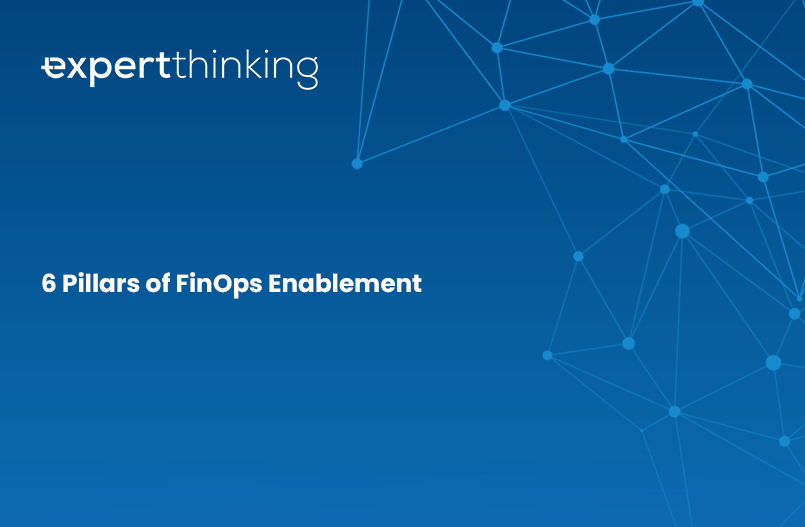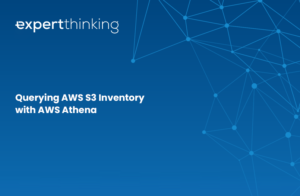6 Pillars of FinOps Enablement
According to analysis by Gartner, spending on public cloud services is forecast to grow 20.7% to total $591.8 billion in 2023, up from $490.3 billion in 2022.
Given the current economic outlook, and as highlighted in the analysis by Gartner, it will be extremely interesting to see how organisations navigate the push/pull dynamic of continuing to unlock the business benefit of cloud technologies whilst at the same time reign in the runaway costs associated.
FinOps is clearly a key theme for 2023. I highly recommend anyone involved with cloud to familiarise themselves with the fantastic work of the FinOps Foundation and their extensive framework for FinOps adoption. As part of our FinOps enablement workshops at Expert Thinking I also put together this short document outlining the core pillars of enablement, aligned with the frameworks core principles.
Collaboration
Collaboration between teams is fundamental to the successful adoption of FinOps practices. Due to the dynamic nature of cloud, teams need to be enabled to make near real-time decisions.
Effective collaboration helps to ensure that all stakeholders are working towards common goals and that financial decisions are made in the context of the overall business strategy. It also helps to ensure that financial resources are allocated in a way that supports the achievement of business objectives.
In addition, collaboration helps to foster transparency and open communication about financial matters, which can lead to better decision making and improved financial performance. It also allows for the sharing of ideas and best practices, which can help organizations identify opportunities for improvement and optimize their financial processes.
Ownership
“You build it, you account for it”
Taking ownership of cloud usage can help to foster a culture of accountability and responsibility within the organization, which can lead to better decision making and improved financial performance. It also allows individuals to take more control over their own workflows and processes, which can improve productivity and efficiency.
When everyone takes ownership of their cloud usage, it helps to ensure that resources are being used in line with business needs and that waste is minimized. This can help to reduce cloud costs and improve the overall financial performance of the organization. Cost efficiency becomes a key performance metric for engineering teams.
Visibility
Timely access to FinOps reports and dashboards allows decision makers to quickly identify trends, patterns, and opportunities for improvement, and to take action accordingly. It also allows for more accurate forecasting and budgeting, which can help to ensure that financial resources are being used effectively.
In addition, near real-time visibility of FinOps dashboards helps to ensure transparency and open communication about financial matters throughout the organization. This can foster a culture of trust and accountability, and can help to build confidence in financial decision making.
Value Based Decision Making
View cost holistically, seeing it through the lenses of value-based metrics and unit economics vs simply aggregate spend. Cloud is an enabler of innovation and rapid change to drive business value opposed to a flat cost of IT.
The FinOps Framework prescribes that organisations make deliberate trade-offs between cost, quality, and speed, referred to as the “Iron Triangle”

Central Governance
Having a centralized team dedicated to FinOps allows for a more coordinated and cohesive approach to financial management, as it ensures that all stakeholders are working towards common goals and that financial decisions are made in the context of the overall business strategy. It also allows for the sharing of ideas and best practices, which can help organizations identify opportunities for improvement and optimize their financial processes.
Having a central function take care of reserved instance purchases, committed usage, volume discounts etc means that teams can be free to focus on where they can make the greatest impact – engineering for efficiency, usage optimalization etc
Leverage Variable Pricing
Leveraging the variable cost model of cloud can help you optimize your cloud costs and better align your resources with the needs of your workload, in a way that you only pay for the resources that you use, rather than a fixed amount regardless of usage. This means that you can scale your resources with just-in-time compute to meet the demands of your workload, without incurring additional costs.
The variable cost model allows for greater agility over longer term contracts or upfront commitments.
Thanks for reading!
For more information on helping enable FinOps in your organisation, please reach out directly via LinkedIn or via the “Get in Touch” page here.




